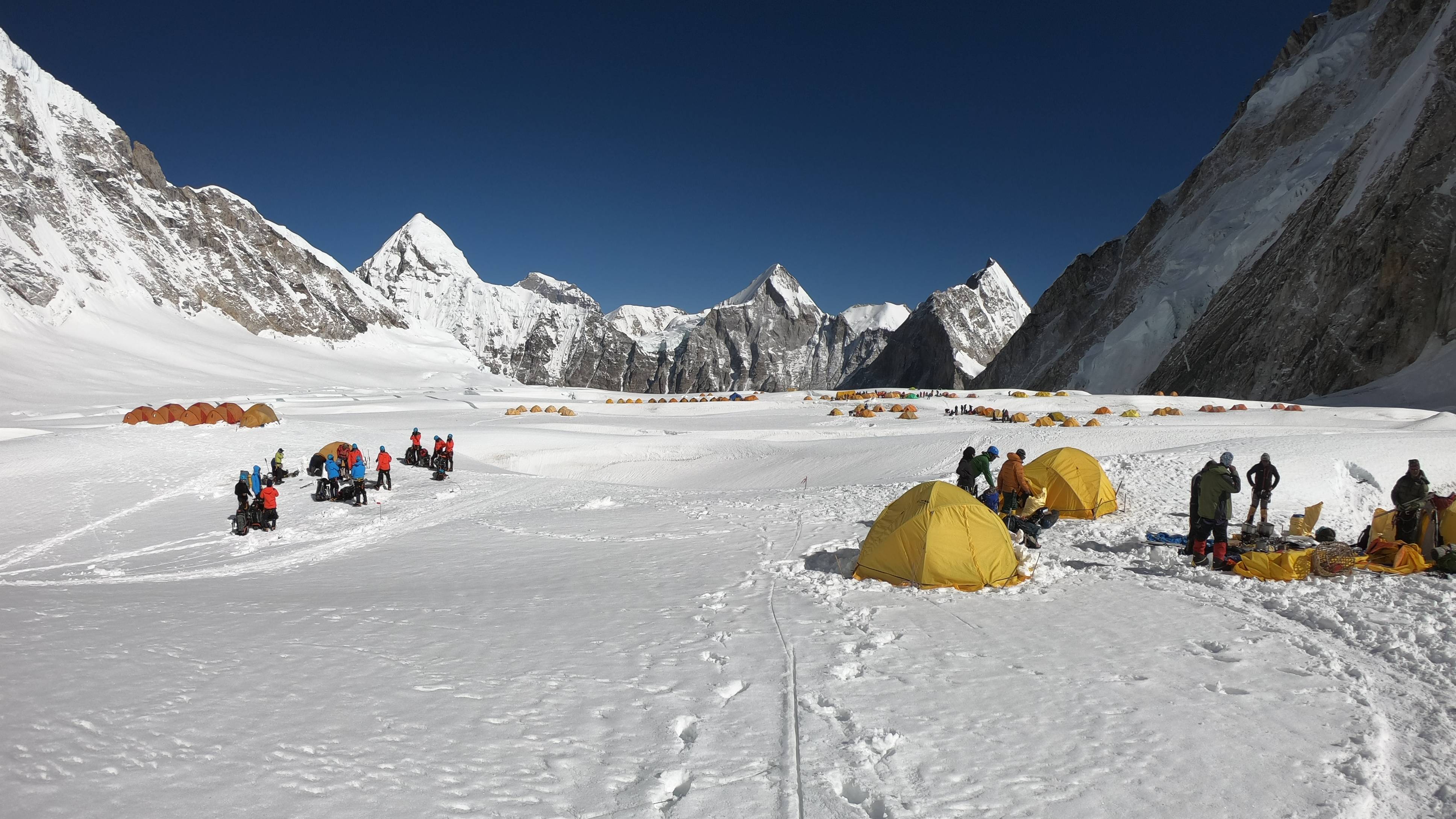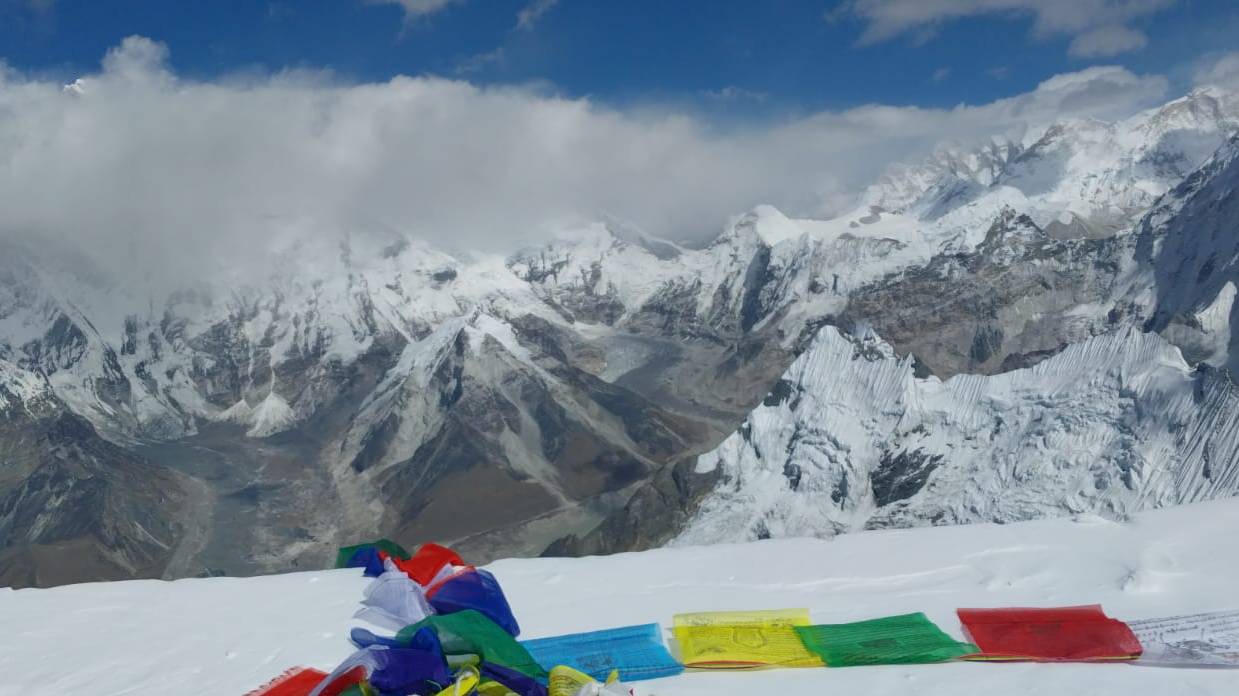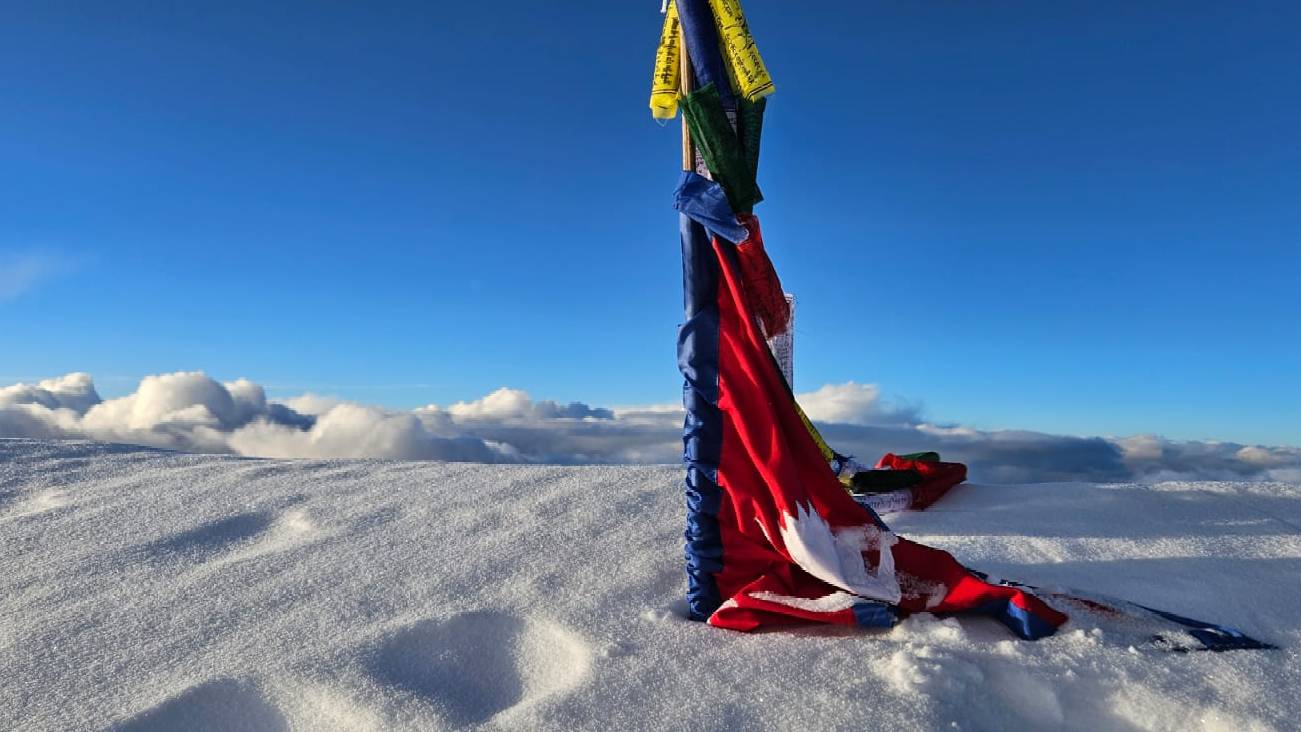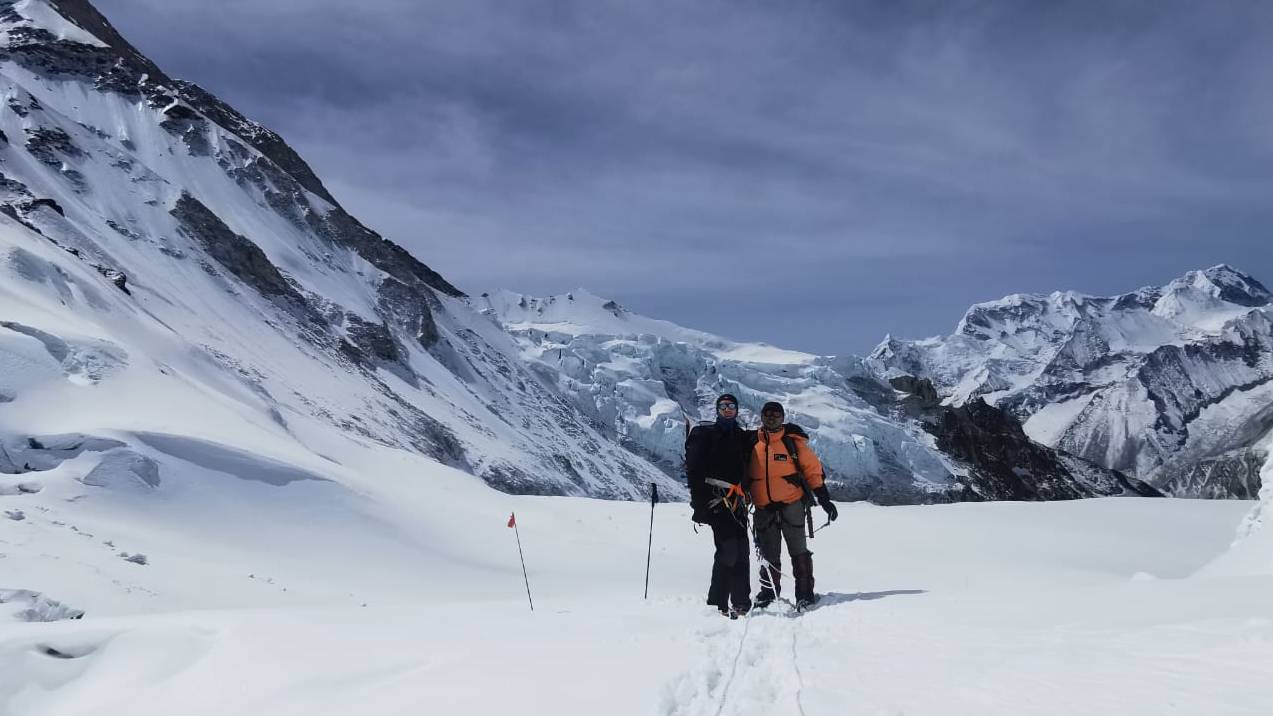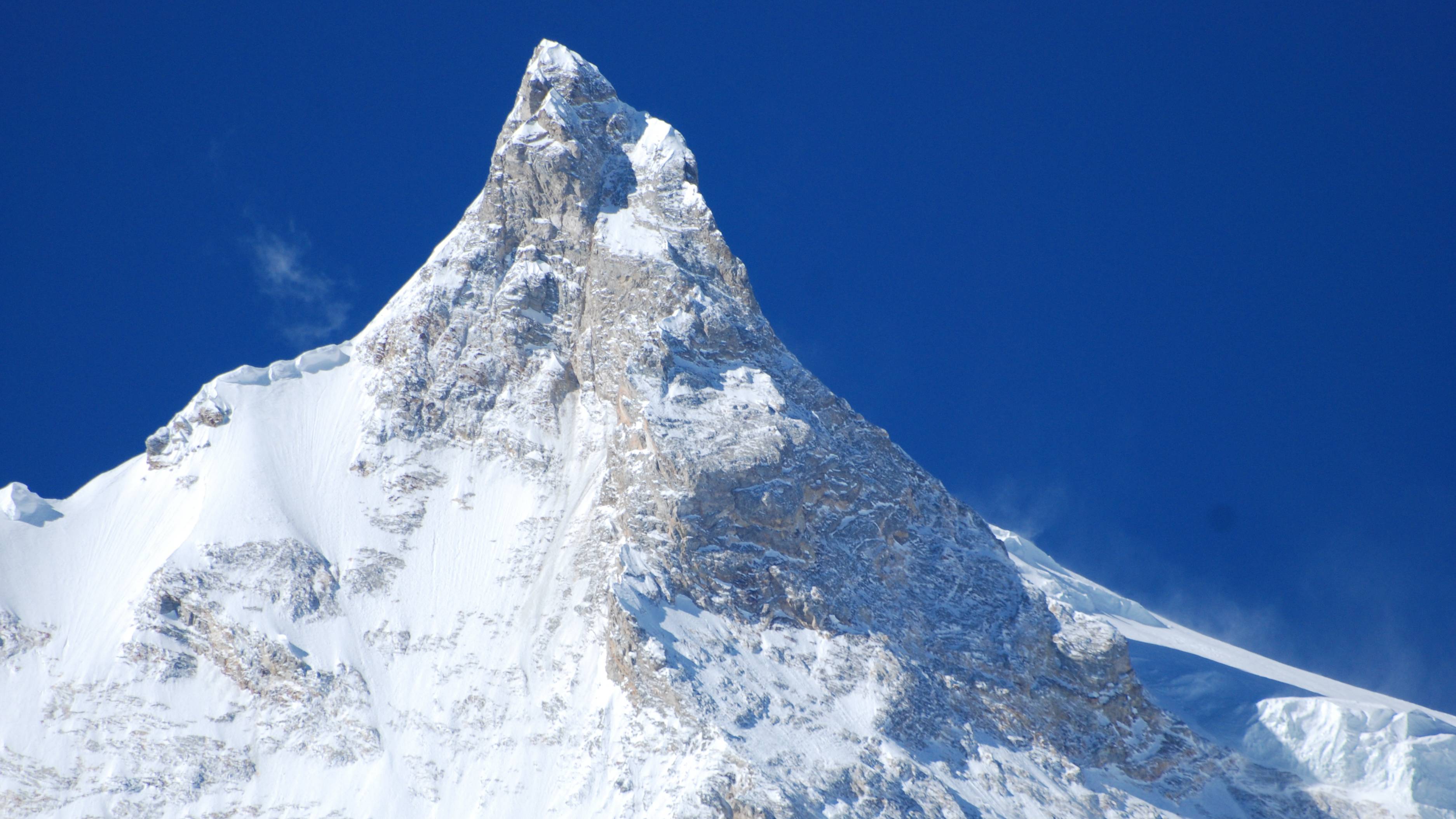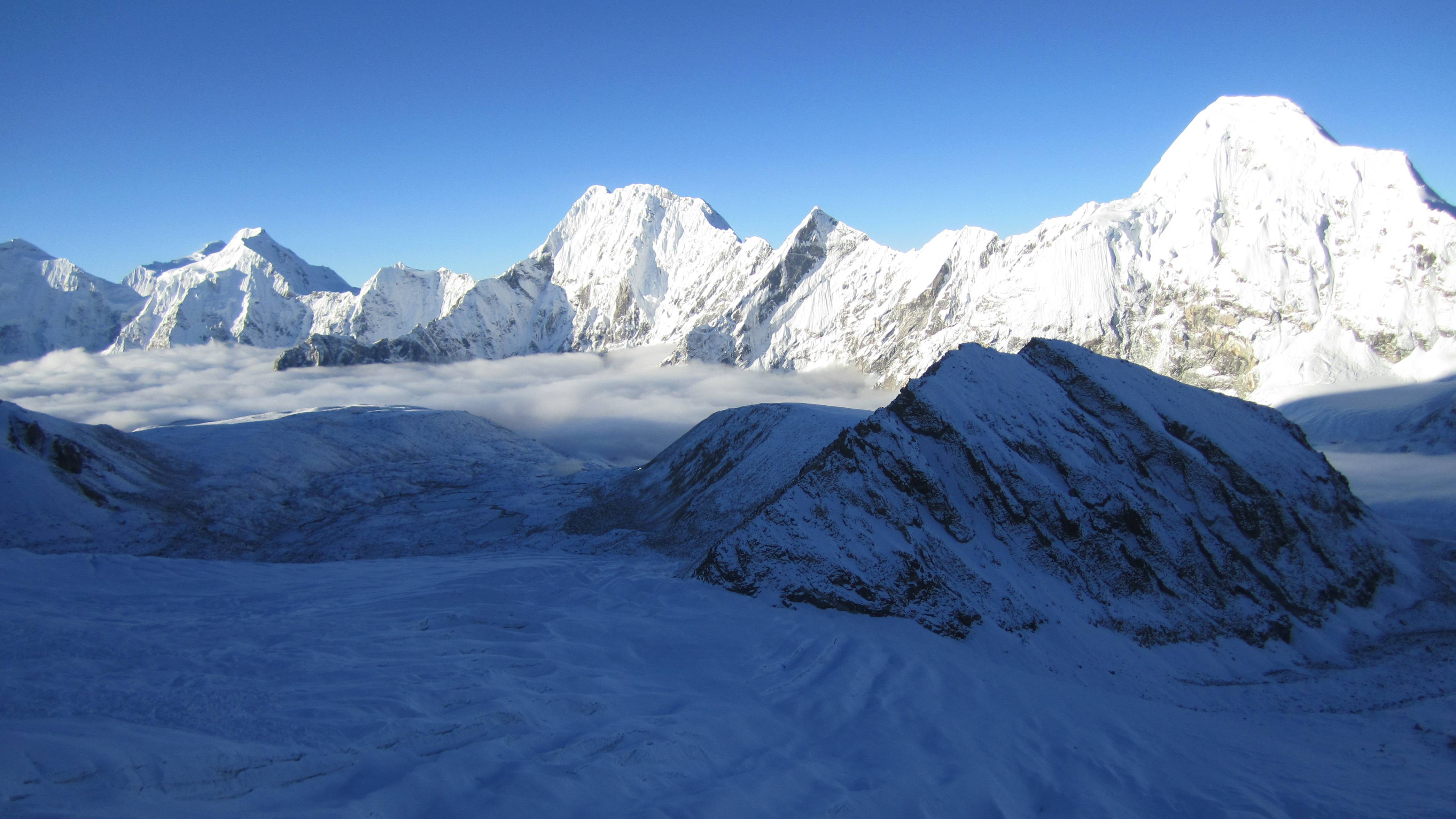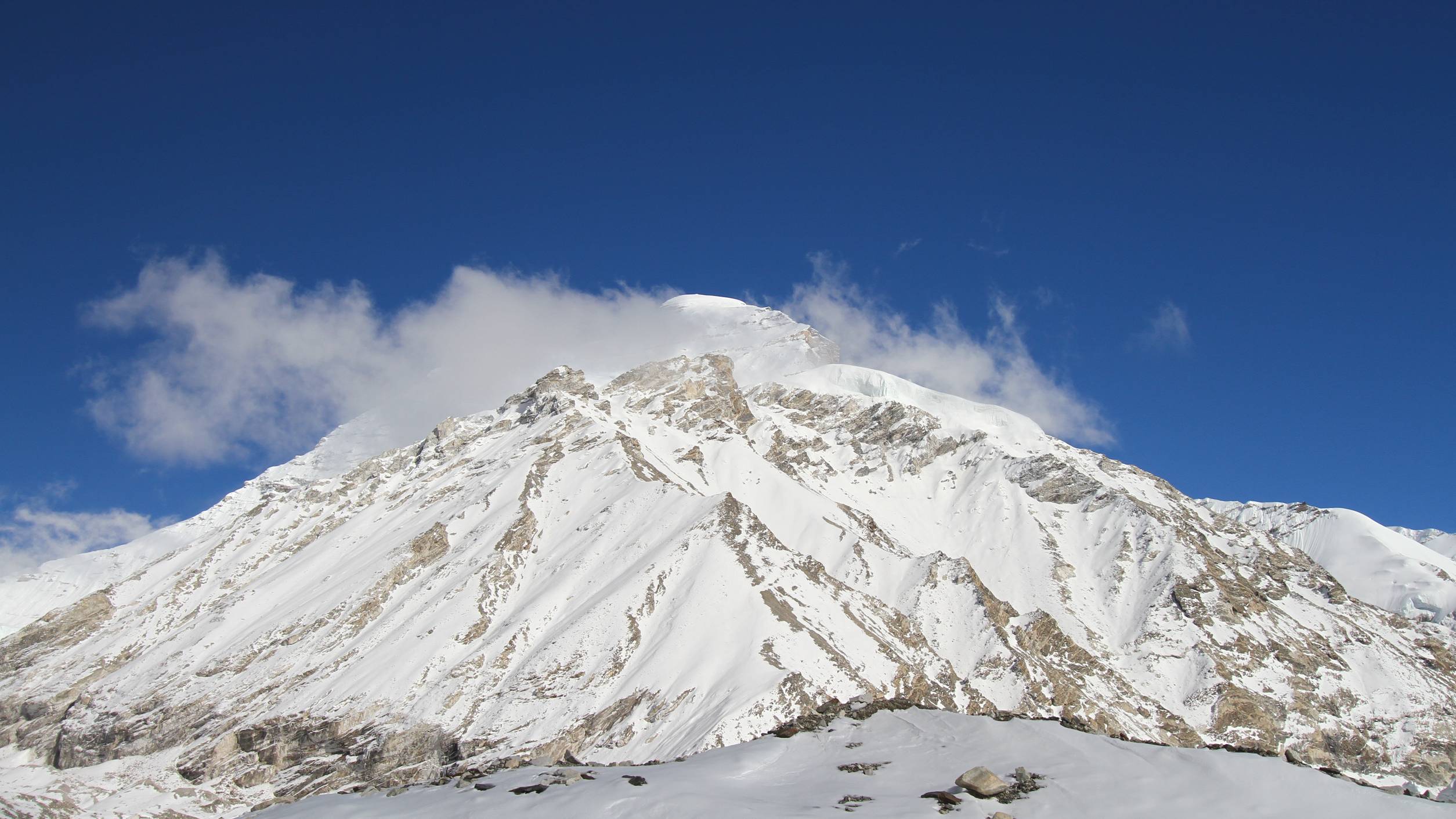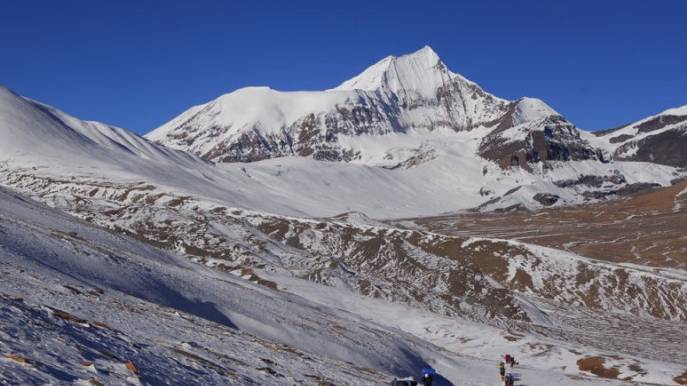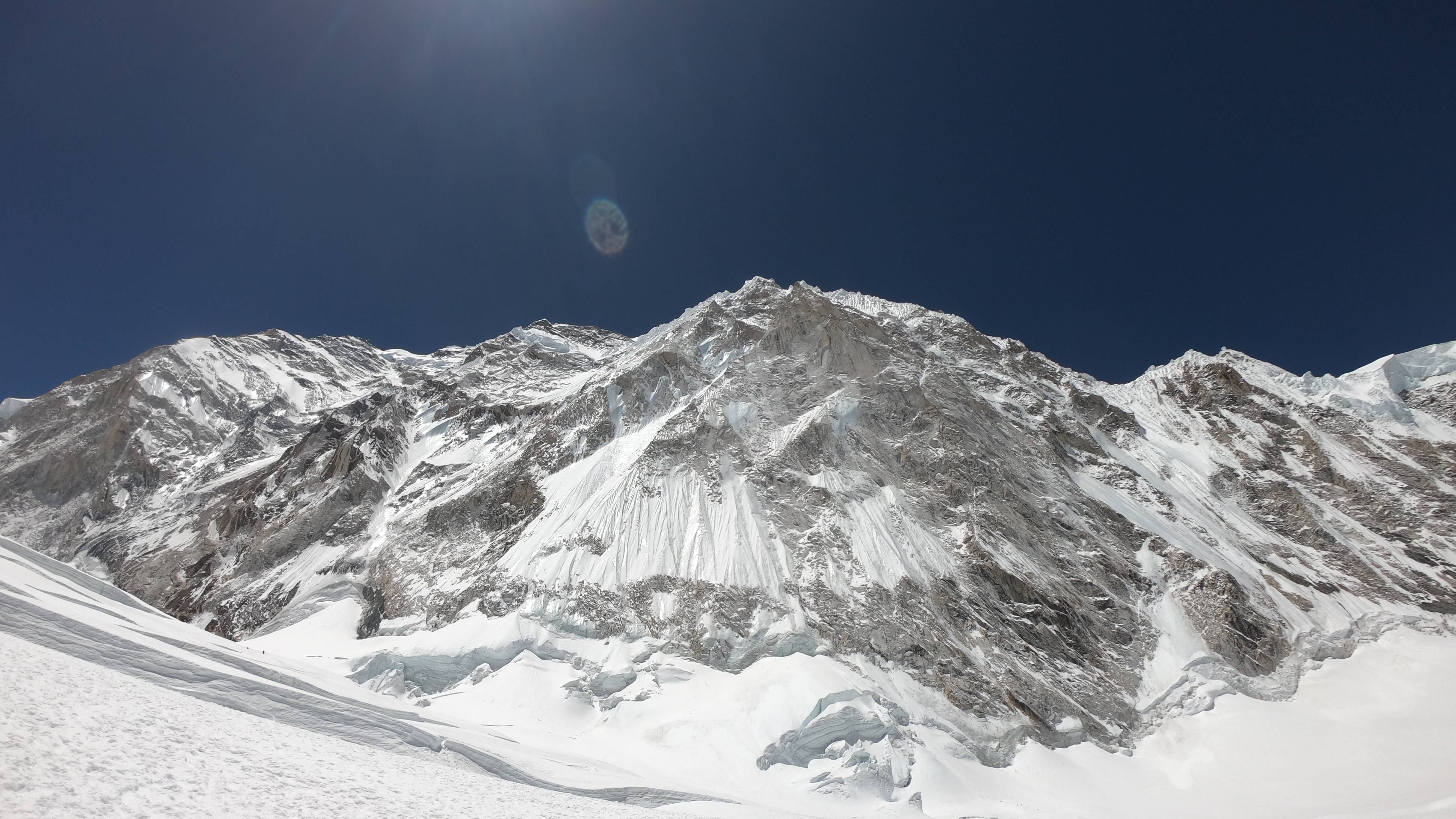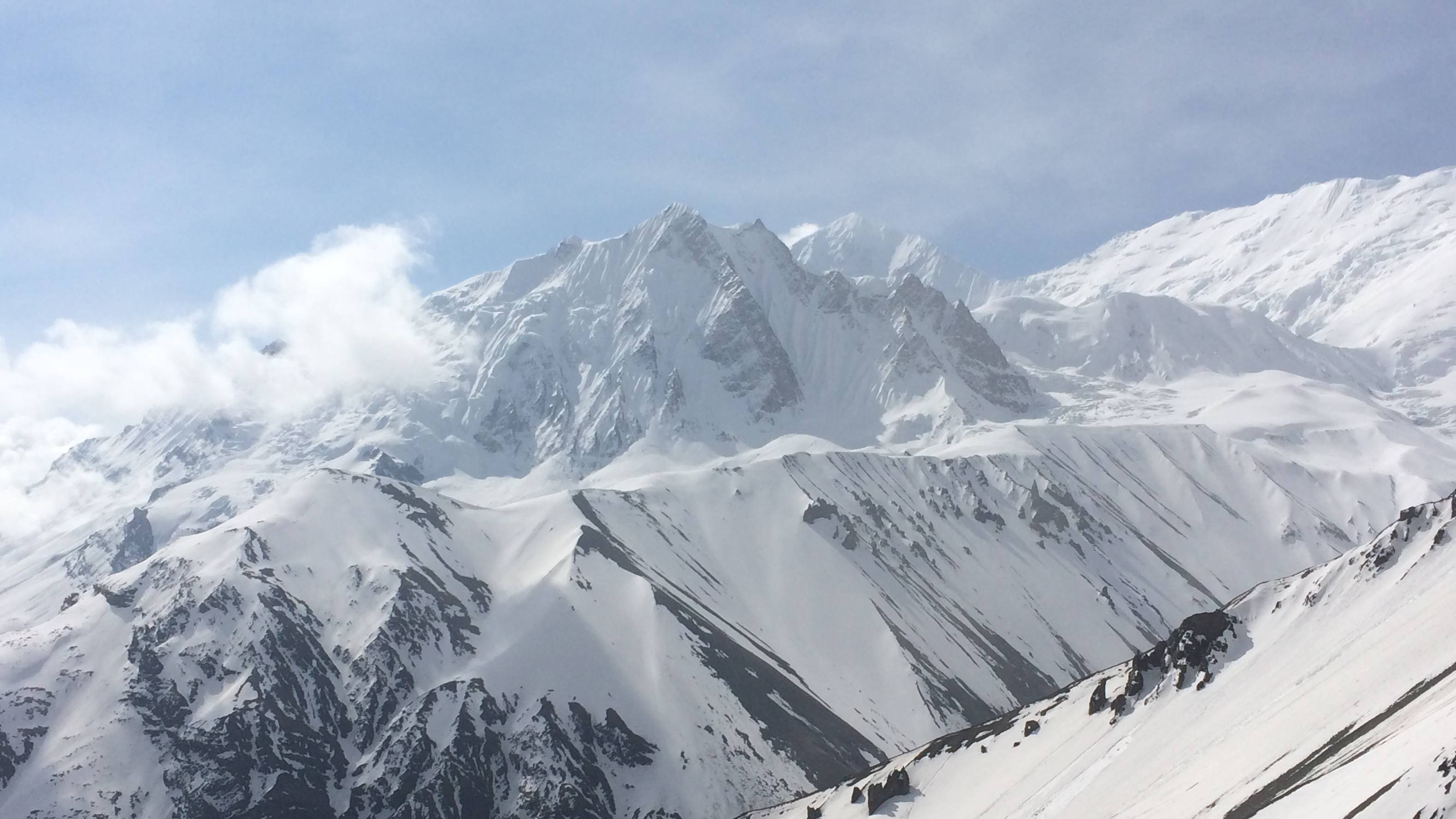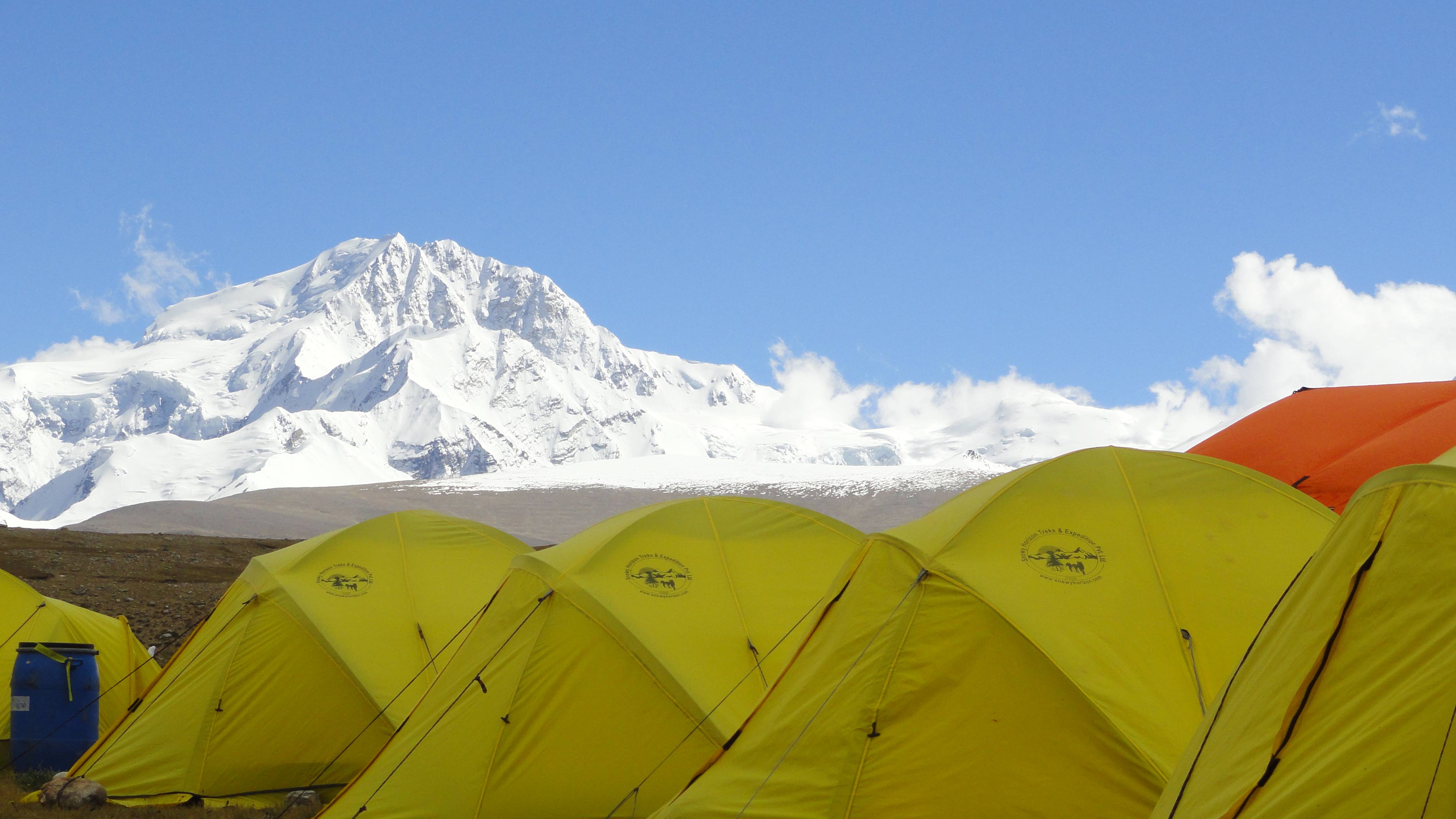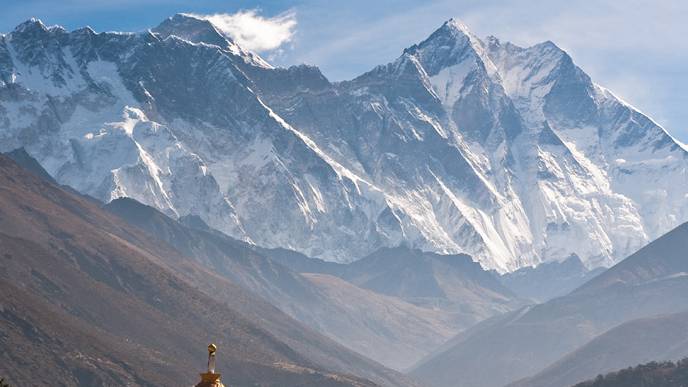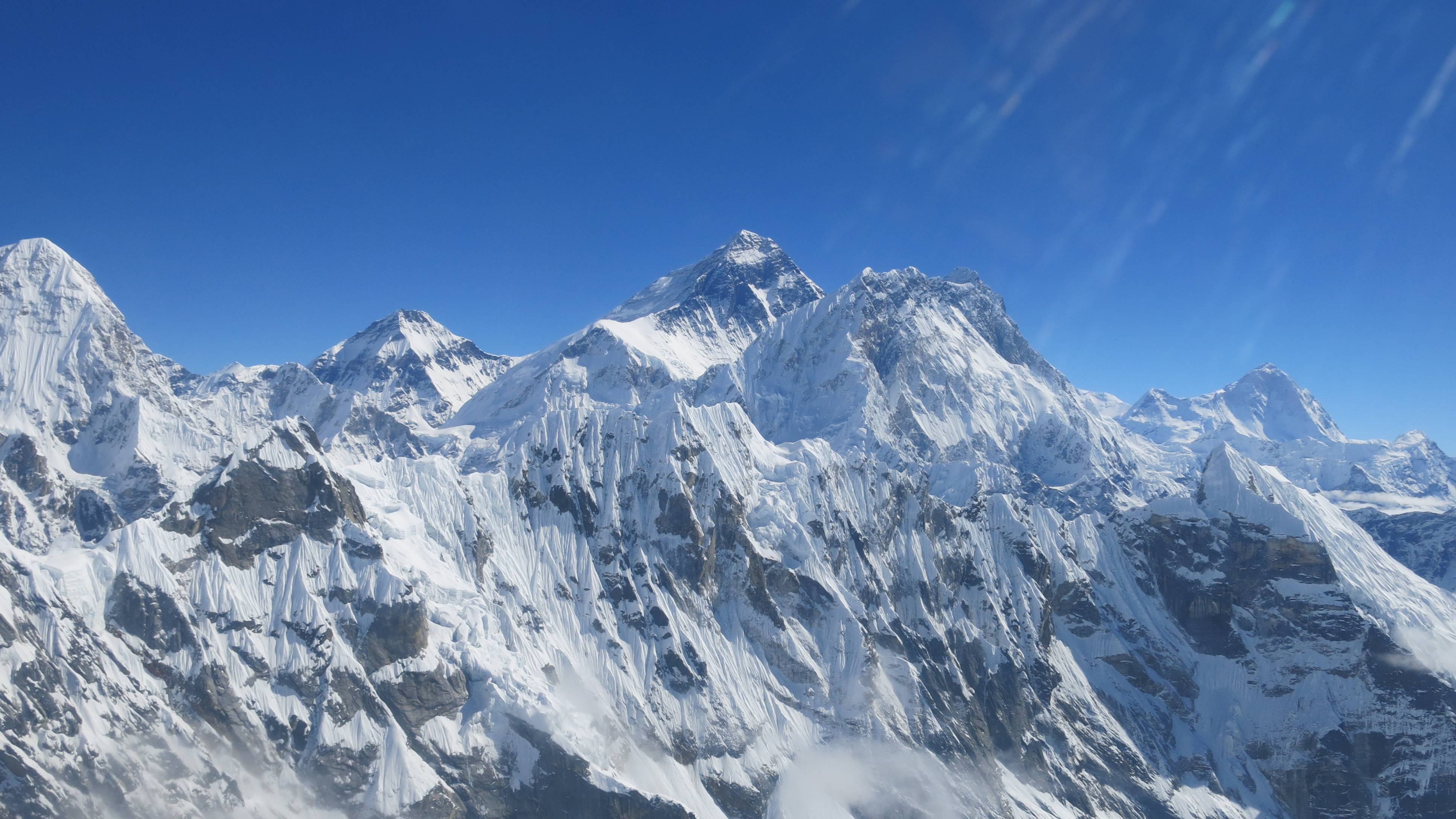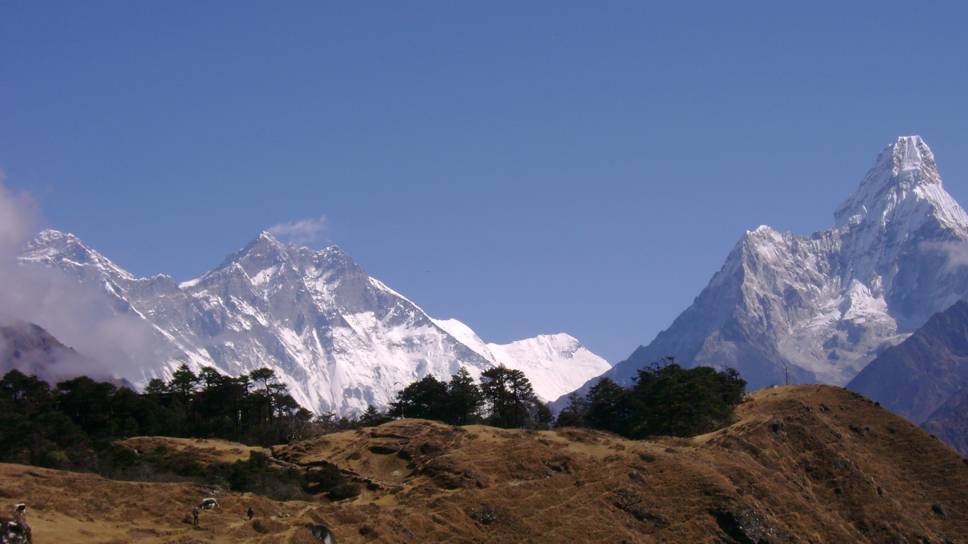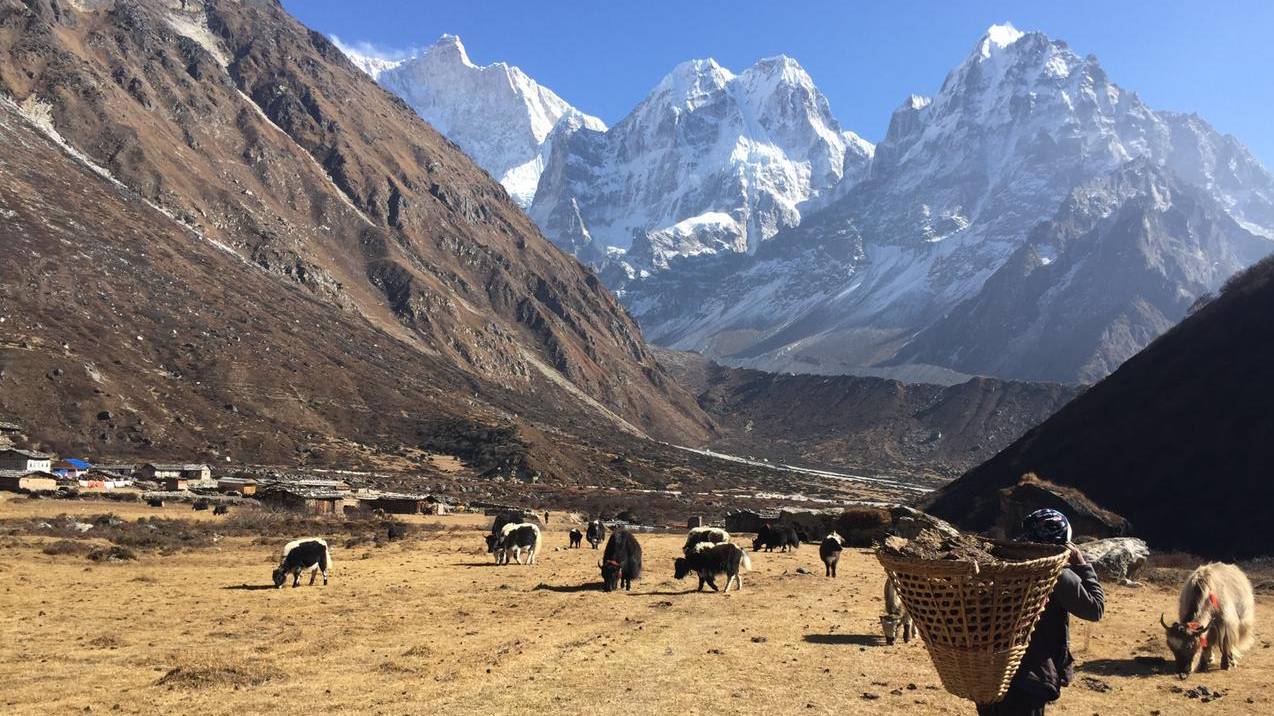EBC-Island Peak-Ama Dablam Expedition
Overview
“Be prepared and get set for the famous trekking peak climbing on Island Peak “The Imja Tse” for acclimating, and explore and experience the beauty of Mt. Ama Dablam with your best climbing skills, taking the support of the trained and summiteers climbing Sherpa team of “Team Snowy Horizon”.
Snowy Horizon Treks & Expedition offers a special Ama Dablam expedition combined with the Island Peak climbing. Ama Dablam Expedition with Island Peak climbing extends the program by minimum 4 days but this is a very nice way to acclimatize for the climb and to pay homage to the King of the Himalayas to experience the classic Everest massive view from the summit of Island Peak, which in itself is a nice visual and albeit easy but pleasant climbing experience. Island Peak has an impressive, highly glaciated West Face that rises from the Lhotse Glacier. Previous experience and acclimatization are the most important facts for climbers on their upcoming trip. When you climb Island Peak first, even if you are first-time climbers above 6000m or due to lack of time unable to climb you wish to climb, Island peak reminds your knowledge and becomes more experienced. It ultimately makes you courageous to start the Expedition of Mt. Ama Dablam.
Mt. Ama Dablam is located in the Khumbu region to the south of Everest and Lhotse. As you would expect, that allows for some stunning views during the climb as well as on the summit. The mountain stands above the famous Tyangboche Monastery, which is traditionally visited by climbers in the region. It should be stressed that, despite all the pleasant parts, this is in general a demanding climb and participation in an Ama Dablam Expedition demands solid skills in rock climbing, ice climbing, sufficient experience of high altitude and general technical competency. There are steep ice sections to be overcome at high altitudes and there are sections of serious exposure, which can be particularly challenging.
Experience Required:
For the Ama Dablam Expedition, all climbers need to have good skills in rock and ice climbing and be technically competent. We will fix ropes and make use of the existing infrastructure (if any), however, the climbers should possess the necessary skills of climbing through steep rock and hard compact ice without them. We follow the standard Southwest ridge route (normal route) to the top, as it is considered the safer route with lower objective dangers of avalanches. We begin the approach as usual in the region from Lukla (2860m) and then slowly trek through the Sherpa villages along the trail. We take our time to properly acclimate before we reach base camp and begin the climbing period. We at Snowy Horizon pride ourselves in executing this expedition with a focus on quality as well as safety. As always, the package can be flexibly adjusted to your requirements (in case you want some additional acclimatization time beforehand, etc.) you can feel free to contact us any time for suggestions and advice. We’d be happy to take you on this Mt. Ama Dablam Expedition adventure with our great team.
Island Peak Climbing and Ama Dablam Expedition Base Camp Services:
- In Island Peak, we provide normal tented camping and camp meals prepared by your Sherpa or in a fixed camp at Island Peak Base Camp depending on the size of the group and climbing seasons.
- Snowy Horizon Treks & Expedition provides very professional, supportive and friendly mountaineering logistic services from Kathmandu to the ABC as well as during the Expedition.
- Our objective is to ensure good quality, supportive, safe, friendly, stress-free and comprehensive service to maximize the summit opportunity of the mountain.
- We provide a comprehensive service organizing all necessary permits, and climbing documentation, traveling logistics including airfares, ground transportation, porters, and other individual services required by mountaineers. On the trek to the ABC, we organize all required accommodation and food in teahouses.
- In the Base camp, our cook and helpers will prepare and serve three times delicious freshly cooked and plentiful meals a day and will ensure that hot and cold drinks are available 24hrs a day.
- We provide spacious expedition quality personal tents for all our clients.
- We also provide a dining tent, kitchen tent, toilet facilities and portable shower facilities and tent accommodation for our staff.
- We provide access to communication including satellite telephone and Internet access, and solar panels to charge your batteries.
Island Peak Climbing and Ama Dablam Expedition Full Board Services:
- In Ama Dablam BC for full board Service, we provide a personal tent and food, which will be prepared by their climbing Sherpa on C1, C2 & C3.
- We provide UHF/VHF handheld radios on the mountain to maintain communications between ABC and high camps.
- We provide a personal climbing Sherpa guide to help the clients to reach the summit. Personal climbing Sherpa will set up camp 1, camp 2 and camp 3 including food and fuel provisions, and assist the client to the summit on this technical climb, where one requires a climbing buddy and a be layer. The climb requires cooperation between teams in setting up fixed ropes. Our camp manager and guides will coordinate work with other teams on the route setting.
Approaches to BC:
The approach to the Base camp for Ama Dablam Expedition is short, sweet and beautiful beginning with the amazing flight to Lukla after a few hours drive from Kathmandu to Manthali airport of Ramechhap and following the Everest Base camp trail through Namche Bazaar to Tyangboche and peeling off it just past Pangboche. The Base camp is located at 4600m.
Climbing Routes:
- During your trek to EBC and return to Ama Dablam Base Camp you will climb Island Peak en route via Dingboche-Chhukung-Island Peak and there is a fixed and normal route of climbing.
- The standard climbing route for Ama Dablam Expedition is via the Southwest ridge with a typical arrangement of 3 high camps: Camp 1 (5600m), Camp 2 (5900m) and Camp 3 (6200m) with Base Camp at 4600m and High Camp at 5000m as a store camp.
- The high camp is located 150m below the ridge and all other 3 camps are directly on the ridge ensuring a great vantage point for all camps for stunning views.
Day-to-Day Itinerary:
18 Oct: Day 01: Arrival at Kathmandu Airport and transfer to hotel
19 Oct: Day 02: Briefing and drive to Mulkot (570m-95 Km.-3 Hrs.) (Way to Ramechhap); hotel.
20 Oct: Day 03: Drive to Manthali (475m-1 Hr.), fly to Lukla (2837m) trek to Phakding (2610m-3 Hrs.); lodge.
21 Oct: Day 04: Trek from Phakding to Namche Bazar (3450m-7 Hrs.); lodge.
22 Oct: Day 05: Rest in Namche Bazaar, hike to Hotel Everest View (HEV) for acclimatization.
23 Oct: Day 06: Trek from Namche to Tyangboche (3870m-5 Hrs.); lodge.
24 Oct: Day 07: Trek from Tyangboche to Dingboche (4390m-6 Hrs.); lodge.
25 Oct: Day 08: Rest and acclimatization in Dingboche, explore hiking.
26 Oct: Day 09: Trek from Dingboche to Lobuche (4930m-5 Hrs.); lodge.
27 Oct: Day 10: Trek to Gorak Shep (5160m), explore Everest Base Camp (5300m) and back; lodge.
28 Oct: Day 11: Explore sunrise at Kala Pattar (5545m) and trek back to Dingboche; lodge.
29 Oct: Day 12: Trek from Dingboche to Chhukung (4730m-4 Hrs.); lodge.
30 Oct: Day 13: Trek Chhukung to Island Peak Base Camp (5100m), camping.
31 Oct: Day 14: Climb to Island Peak summit (6160m) back to base camp; camping.
01 Nov: Day 15: Trek from Island Peak BC to Pangboche (3985m-7 Hrs.); lodge.
02 Nov: Day 17: Trek to Ama Dablam Base camp (4400m-2 Hrs.), camping.
03-11Nov: Day 18-25:Climbing period to summit Ama Dablam (6,812m).
12 Nov: Day 26: Trek to Tyangboche (3860m-5 Hrs.); lodge.
13 Nov: Day 27: Trek to Monjo (2800m-7 Hrs.); lodge.
14 Nov: Day 28: Trek to Lukla (2840m-5 Hrs.); lodge.
15 Nov: Day 29: Fly to Ramechhap, drove to Kathmandu (5 Hrs.), transfer to Hotel; farewell dinner.
16 Nov: Day 30: Contingency or leisure day in Kathmandu; hotel.
17 Nov: Day 31: Transfer to the airport for your final destination.
Day-to-Day Itinerary:
18 Apr: Day 01: Arrival at Kathmandu Airport and transfer to hotel (B&B) (1350m)
19 Apr: Day 02: Rest, last-minute shopping, preparation and briefing in Kathmandu.
20 Apr: Day 03: Fly to Lukla (2840m); trek to Phakding (2600m/4hrs); lodge.
21 Apr: Day 04: Trek to Namche Bazaar (3440m/7hrs), lodge.
22 Apr: Day 05: Acclimatization in Namche; hike to Everest View Lodge; visit Hilary Museum.
23 Apr: Day 06: Trek to Tyangboche (3860m/5hrs), lodge.
24 Apr: Day 07: Trek to Dingboche (4250m/5hrs), lodge.
25 Apr: Day 08: Trek to Lobuche (5018m/4hrs), lodge.
26 Apr: Day 09: Acclimatization at Lobuche; visit Pyramid research facility
27 Apr: Day 10: Trek to Everest Base Camp and back to Gorakshep (5170m/3hrs), lodge.
28 Apr: Day 11: Trek to Kalapather (5554m), back, and after breakfast trek to Lobuche, lodge.
29 Apr: Day 12: Trek to Dingboche (4410m/5hrs); lodge.
30 Apr: Day 13: Trek to Chhukung (4730m/4hrs); lodge.
01 May: Day 14: Trek to Island Peak Base Camp (5087m/3hrs); camping.
02 May: Day 15: Climb to Island Peak (6189m); return to Base Camp; camping.
03 May: Day 16: Trek to Pangboche (4000m/5hrs); enjoy Sherpa culture; lodge.
04 May: Day 17: Trek to Ama Dablam Base camp (4400m/4hrs), camping.
05 -13 May: Day 18-26: Climbing period to summit Ama Dablam (6,812m).
14 May: Day 27: Trek to Tyangboche (3860m/6hrs); lodge.
15 May: Day 28: Trek to Monjo (2800m/7hrs); lodge.
16 May: Day 29: Trek to Lukla (2840m/5hrs); lodge.
17 May: Day 30: Fly back to Kathmandu, transfer to Hotel, farewell dinner.
18 May: Day 31: Transfer to the airport for final departure.
Full Board Service Cost : Please contact us by email or call us
Cost Include
- All arrival and departure transfers in Kathmandu for International and domestic flights.
- 3 Nights 3 Star Hotel accommodations in Kathmandu on BB Plan (twin sharing).
- 1 Night MAP plan accommodation at Mulkot on the way to Ramechhap.
- Flight and transfers for Kathmandu-Manthali-Lukla- Manthali-Kathmandu to members and guide.
- Guided teahouse trekking with full board meal and accommodation as per itinerary.
- Complete camping logistics with furniture, kitchenware, dining, kitchen, etc. in base camp.
- Full 3 meals (BLD) at base camp with single tent accommodation for each member.
- Government royalty for a permit to climb Mt. Ama Dablam and Island Peak with all formalities.
- Fully paid and insured government-approved liaison officer in the team (mandatory).
- Rope fixing facility by climbing Sherpa team of all operators/seasonal groups on high camps.
- 1:1 climbing Sherpa for support and assistance to the climbing member for Island Peak and Ama Dablam.
- Wages, equipment, rescue medical and accidental Insurance for all involved staffs.
- Cooking set and required high-altitude food for high camps climbing members and Sherpa.
- Solar panel for light and battery charging to your devices in the base camp.
- Emergency Oxygen, mask and regulator for medical purposes for members.
- All tents for camps 1 and 2 (Optional Camp-3 if required) pitched by Sherpa.
- First Aid medical kits for the members and the staffs involved in the expedition.
- Per climbing, the member gets a 30 KG personal baggage allowance for carrying by the porter.
- Sagarmatha (Everest) National Park entrance fees and trekking permit.
- Khumbu Pasang Lhamu village municipality entry permit and fees.
- Farewell dinner before departure with Snowy Horizon Management.
- Snowy Horizon Special Gifts (T-shirt/Pashmina etc.).
- Our service charge and Government Taxes levied in Nepal.
Cost Exclude
- Lunch and Dinner during your stay in Kathmandu (except farewell dinner).
- Clothing, packing items or bags, personal medical kit and personal trekking gears.
- Any extra expenses arising out of various/unforeseen situations like natural calamities, landslides, political disturbances, strikes and changes in Government regulations.
- Any additional staff (s) other than specified.
- Summit bonus to your personal climbing Sherpa(Required begins from a minimum of US$ 700 per summit per Sherpa)
- Tips to base camp staffs (Per member beginning from a minimum of US$ 100.00 in total)
- Repatriation, medicines, medical tests and hospitalization expenses for the member.
- Travel insurance and helicopter rescue evacuation for the member.
- Any other item not included in the “The Service Includes” section.
Base Camp Service Cost : Please contact us by email or call us
Cost Include
- All arrival and departure transfers in Kathmandu for International and domestic flights.
- 4 Nights 3 Star Hotel accommodations in Kathmandu on BB Plan (twin sharing).
- Flight and transfers for Kathmandu-Manthali-Lukla- Manthali-Kathmandu to members and guide.
- Guided teahouse trekking with full board meal and accommodation as per itinerary.
- Complete camping logistics with furniture, kitchenware, dining, kitchen, etc. in base camp.
- Full 3 meals (BLD) at base camp with single tent accommodation for each member.
- Government royalty for a permit to climb Mt. Ama Dablam and Island Peak with all formalities.
- Fully paid and insured government-approved liaison officer in the team (mandatory).
- Wages, equipment, rescue medical and accidental Insurance for all involved staffs.
- Solar panel for light and battery charging to your devices in the base camp.
- Emergency Oxygen, mask and regulator for medical purposes for members.
- First Aid medical kits for the members and the staffs involved in the expedition.
- Per climbing, the member gets a 30 KG personal baggage allowance for carrying by the porter.
- Sagarmatha (Everest) National Park entrance fees and trekking permit.
- Khumbu Pasang Lhamu village municipality entry permit and fees.
- Farewell dinner before departure with Snowy Horizon Management.
- Snowy Horizon Special Gifts (T-shirt/Pashmina etc.).
- Our service charge and Government Taxes levied in Nepal.
Cost Exclude
- Lunch and Dinner during your stay in Kathmandu (except farewell dinner).
- Clothing, packing items or bags, personal medical kit and personal trekking gears.
- Any extra expenses arising out of various/unforeseen situations like natural calamities, landslides, political disturbances, strikes and changes in Government regulations.
- Rope fixing on high camps, climbing Sherpa for support, cooking set and high altitude food.
- Any tents for above camp 1 pitched by Sherpa or Snowy representative.
- Tips to base camp staffs (Per member beginning from a minimum of US$ 100.00 in total)
- Repatriation, medicines, medical tests and hospitalization expenses for members.
- Travel insurance and helicopter rescue evacuation for members.
- Any other item not included in the “The Service Includes” section.
Notes
- Cost defers on Hotel Category for Hotels in Kathmandu.
- The itinerary is changeable and modifiable as per the needs and time frame of the clients.
- The cost will be re-calculated if the itinerary is changed or modified.
- Additional activities may be added as per request with nominal additional cost.
- For any kind of changes please contact us by email or call us.
- Grade: Mountaineering
- Elevation: 6,812m (22,334ft)
- Location: Nepal / Everest Region
- Coordinates: 27°51′40″ N 86°51′40″ E
- First Ascent: Maurice Herzog (Nepal), June 3, 1950
- Season: spring (April-May) and autumn (October-December)
- Duration: 31 days (typically)
- Group Size: 02-15 person per Group

